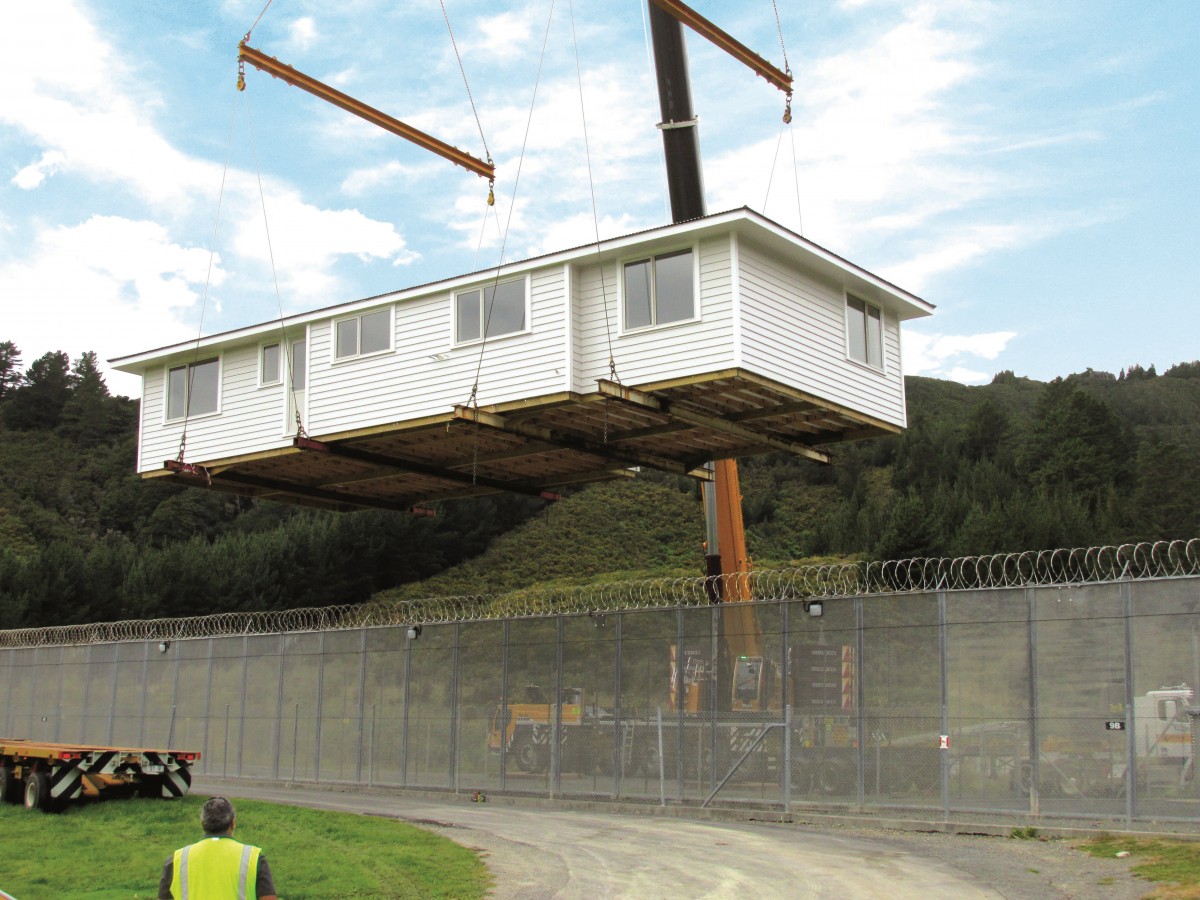TRAINING BEHIND THE WIRE
20 Nov 2018, Industry News, News

Around 500 prisoners are currently undertaking trades training, but a new Department of Corrections scheme plans to boost the number to 900 by 2020 with the goal of building up to 100 homes each year
In a $6 million-$10 million, four-year plan, the Department of Corrections aims to train more prisoners in construction skills, giving them qualifications for their life beyond bars and addressing the construction industry’s skills shortage.
With KiwiBuild gearing up, New Zealand needs more than 50,000 construction workers by 2022 to keep up with demand. While skilled immigrants can help meet that demand, developing skills locally remains a large part of the effort.
In June, Corrections Minister Kelvin Davis said that he expects 540 people could be leaving prison for a job in construction within four years, with more instructors to be recruited to match the increase in training.
Currently two construction yards exist – at Spring Hill Corrections Facility and Rolleston Prison. Corrections NZ has suggested the number increase to four construction yards, with more fencing to allow high security classification prisoners to participate.
Foundations established
Chief Custodial Officer Neil Beales noted that prisoners are already working on Housing New Zealand buildings.
“They get a lot of classroom training, but it’s also real, hands-on building skills. Once these guys realise what they’re capable of, there’s no stopping them; it’s a whole new dawn for them,” said Beales.
Prisoners receive incentive payments while they work and undergo training; they are also encouraged to get construction qualifications upon their release.
“More than 1,100 offenders have been placed in employment in the past 17 months, with 180 of them in construction-related employment. We want to see that grow,” said Beales.
Stephen Cunningham, Director of Offender Employment and Reintegration, says helping offenders into work after imprisonment plays an important role in reducing re-imprisonment, which is why Corrections launched the ‘This Way for Work’ programme in October 2016. Since then it has placed more than 60 offenders a month in jobs; two-thirds of which have retained their employment for more than three months.
“This Way for Work has seen a 14.1% reduction in re-conviction, the second highest for any programme run by Corrections in the past year,” says Cunningham. “This indicates the strength of the effect between employment and the reduced likelihood of re-offending.”
Prisoners with aspirations of getting into the construction industry after release should not cause alarm for employers, says LBP Registrar Paul Hobbs.
“In relation to previous criminal history, not every criminal is a recidivist or reoffender,” said Hobbs.
“The reality is that the trades are an accessible career for those who have previously been through the justice system. Restricting a person’s future based on their past may not always be the best solution.”
There are many trades working in non-residential who don’t have to be licensed. The Licensed Building Practitioners Scheme is open to ex-inmates. While the Board does not undertake criminal background checks to determine licensing eligibility, Rule 7 states LBPs must disclose if they’ve had previous registrations or licences which are subject to or may be subject to disciplinary sanction in the past five years.
“A ground for discipline is included in legislation, whereby a sanction could be handed down if a person’s criminal history reflects adversely on their ability to be an LBP,” says Paul Hobbs. He says this would normally be applied if a compliant made against an LBP reflected a previous criminal conviction.
“The ground for discipline allows those who have not amended their ways to have their past poor behaviour, which appears to have not been remedied, recognised in a disciplinary sanction.”
A success story
Chris, a Wellington-based builder and business owner, currently employs a worker who undertook construction training in prison and recently finished his parole. He says the experience has been “very rewarding” since taking him on five months ago.
“You have to be prepared to put in extra time but it is very rewarding and we’re happy to have him. I’m confident he will be a loyal and hardworking employee for us going forward.
“Despite requiring a bit more attention than the rest of the guys, he’s good on the job, and the rest of the team like the idea of giving people a chance to get rehabilitated and contribute to something meaningful,” says Chris. “We like to be more than just a building company.”
Support via the Correction Department’s ‘Employer Starter Pack’ provides ex-prisoners with the funds to buy tools and cover transport costs for the first month of their employment.
“The support is really helpful,” says Chris. “The beginning is the most challenging part of the process, and having good support networks definitely helps the process for all parties.”
Chris’ interest in employing someone on parole started when he and his wife attended a community workshop, where groups presented their initiatives; one of those included some women from Rimutaka Prison talking about their experience in the Construction Trade Skills programme ran by WelTec.
“Their presentation caught my interest, so we started looking at doing something similar and giving a helping hand to someone who is keen to work and learn coming out of prison,” says Chris.
“Our team here will continue to support our guy and be patient in his development. Everyone has a past and that’s where it should stay.”
If you’d like to discuss taking on someone who has carried out construction training while in prison, get in touch with an Offender Recruitment Consultant at employerpartners@corrections.govt.nz.
Register to earn LBP Points Sign in



